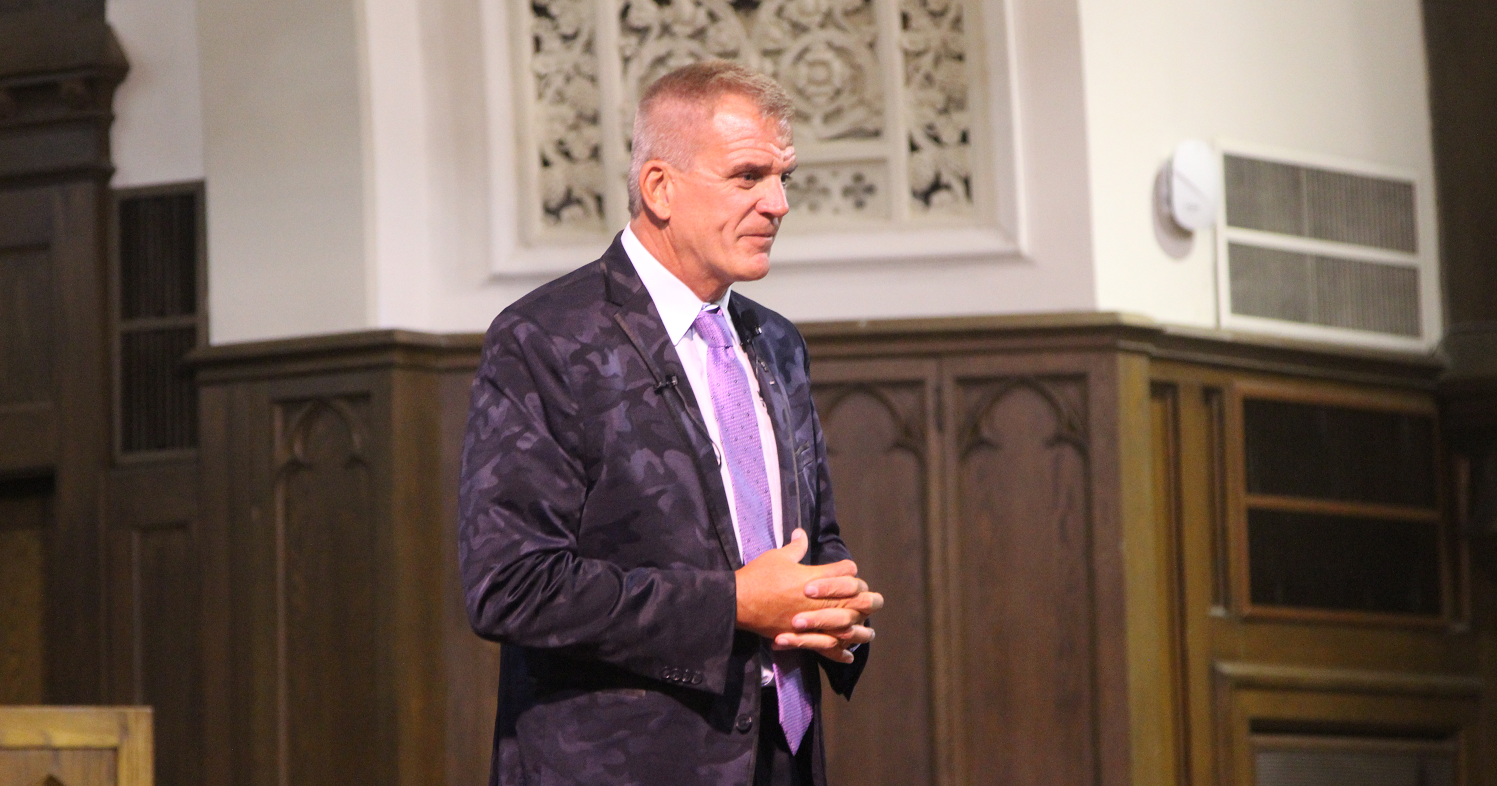 Retired U.S. Navy Master Chief Rick Kaiser admits he thought about quitting.
Retired U.S. Navy Master Chief Rick Kaiser admits he thought about quitting.
It was Hell Week, the seven days of Basic Underwater Demolition SEAL (BUD/S) training where young recruits are kept awake nearly 24/7, and he was being punished for falling asleep after a midnight meal.
“Lucky for me, the punishment was getting put in cold water,” he said, “and it woke me up.”
From that point, Kaiser said, he knew he could follow through on his mission to get through training. He said he’s glad he didn’t quit, but he understood in that instant why so many do.
“I think everybody has that moment, where they think about it,” Kaiser said to the crowd at Linn Memorial United Methodist Church at Central Methodist University on Tuesday, September 10.
A former member of SEAL Team 6, Kaiser recounted for the audience his own history in the Navy and spoke about leadership and integrity. He also explained some history of the SEALs and how military operations changed post-9/11.
Kaiser, who now serves as the executive director of the National Navy SEAL Museum in Fort Pierce, Fla., explained that the first SEALs were trained in Fort Pierce 75 years ago under orders from President John F. Kennedy. When he joined in 1979 (as a 17-year-old), the SEALs were not as widely known as they are today.
Over time, the group has gained a reputation as being an elite force, partially due to the rigorous training involved. Kaiser said there have been about 16,000 SEALs total, and about 2,500 are active at any given time. And at his museum in Florida, memorializing the 302 who have died in the line of duty is a big part of his mission.
On the eve of the 18-year anniversary of the 9/11 terrorist attacks, Kaiser recalled how the group’s operations became global following that event. Rather than having different branches and special forces teams serving in specific areas of responsibility, everyone had to adjust to be able to serve anywhere.
“Pre-9/11 we were always in competition with the Army and other special forces for missions,” he said. “After 9/11 there were so many missions that it didn’t matter. Everybody had to adapt. Everybody had to work with each other.”
Kaiser would go on to describe the requirements for becoming a SEAL and later outlined some interesting numbers from the 309th BUD/S class (Kaiser was a member of Class 109 himself). The class, he said, began with 139 students and graduated a total of 33. With each student running more than 2,000 miles and swimming 128 over the course of the training, the class “completed the equivalent of swimming from Cuba to the southern tip of Florida and then running to New York City.”
In addition to the running and swimming, students also learn to dive and train in shooting and explosives.
A point of emphasis for Kaiser over his own career, though, has been leadership. He outlined 10 key points on which he believes good leaders focus, including order and discipline, trusting your gut, and the 7 P’s: “Proper prior planning prevents piss poor performance.”
Kaiser wrapped up his appearance with questions from the audience, during which he detailed his Hell Week experience, among other information and anecdotes. A reception followed in the back of the church.
The event was sponsored by the CMU department of criminal justice.